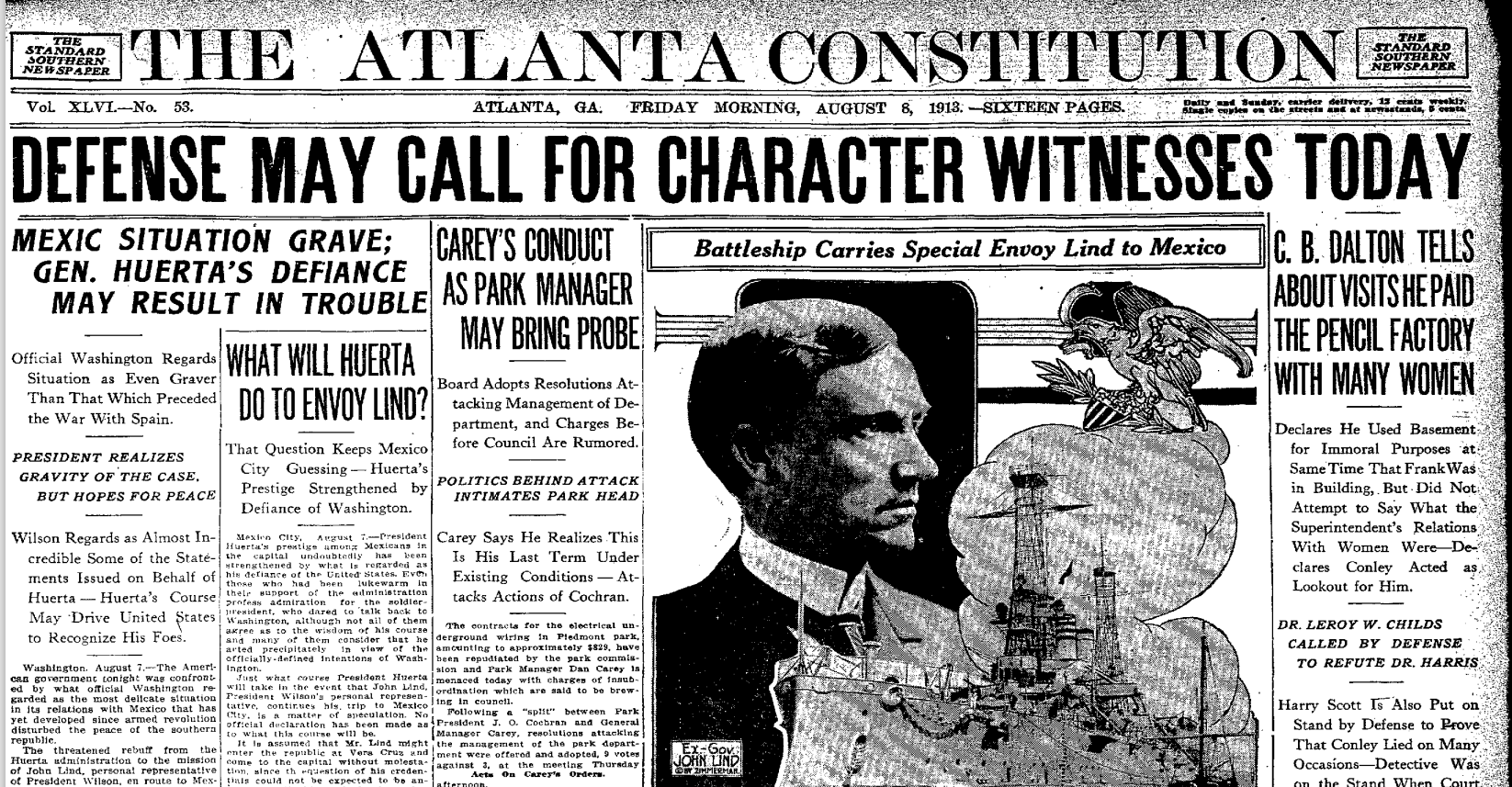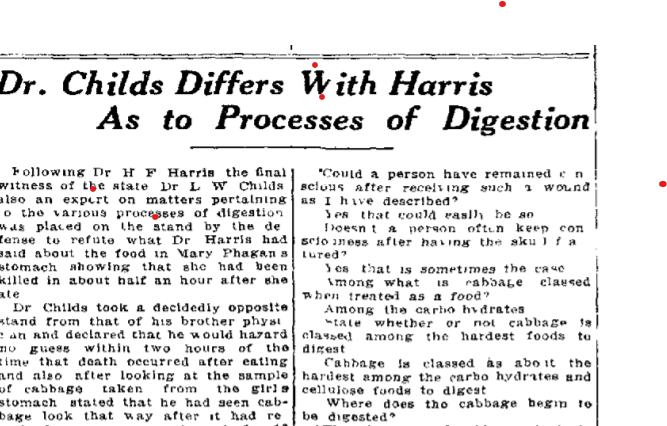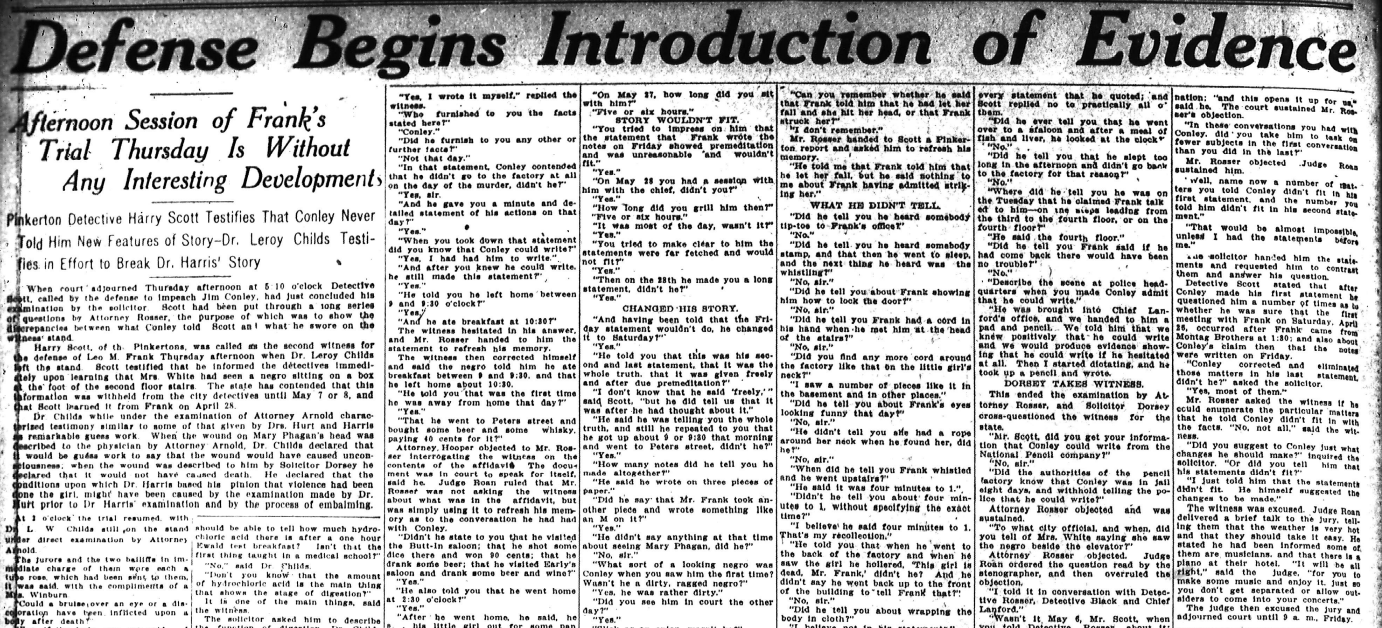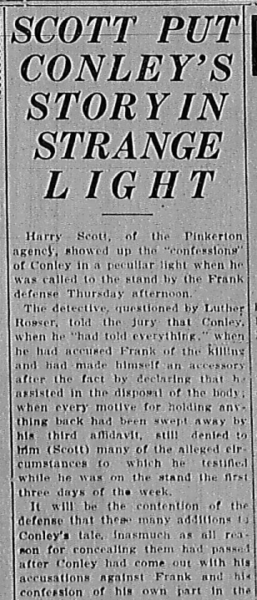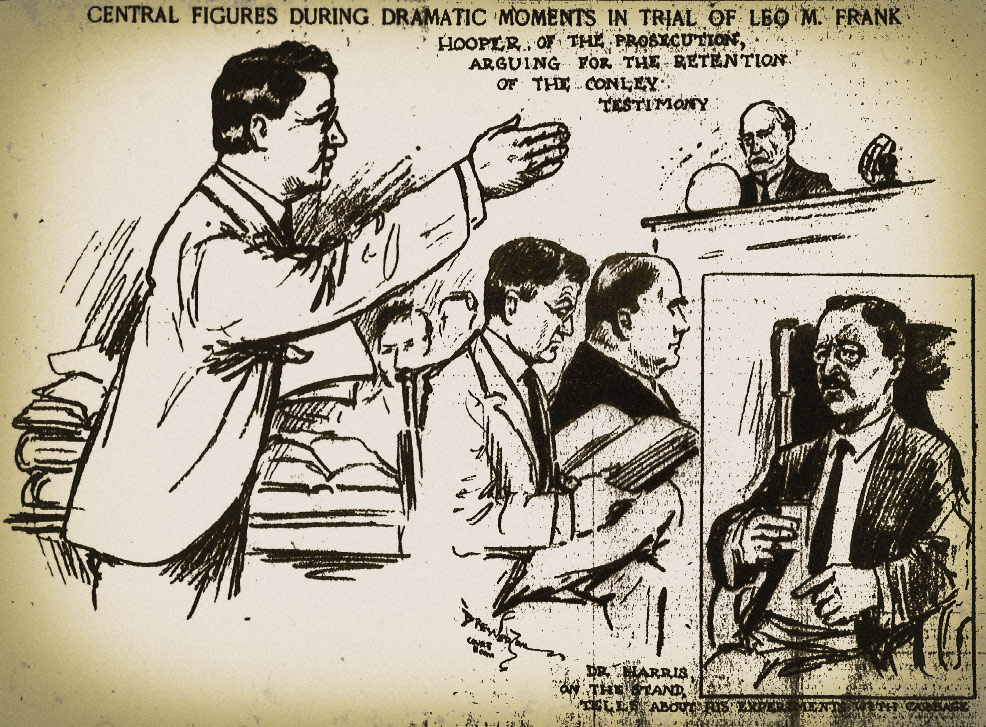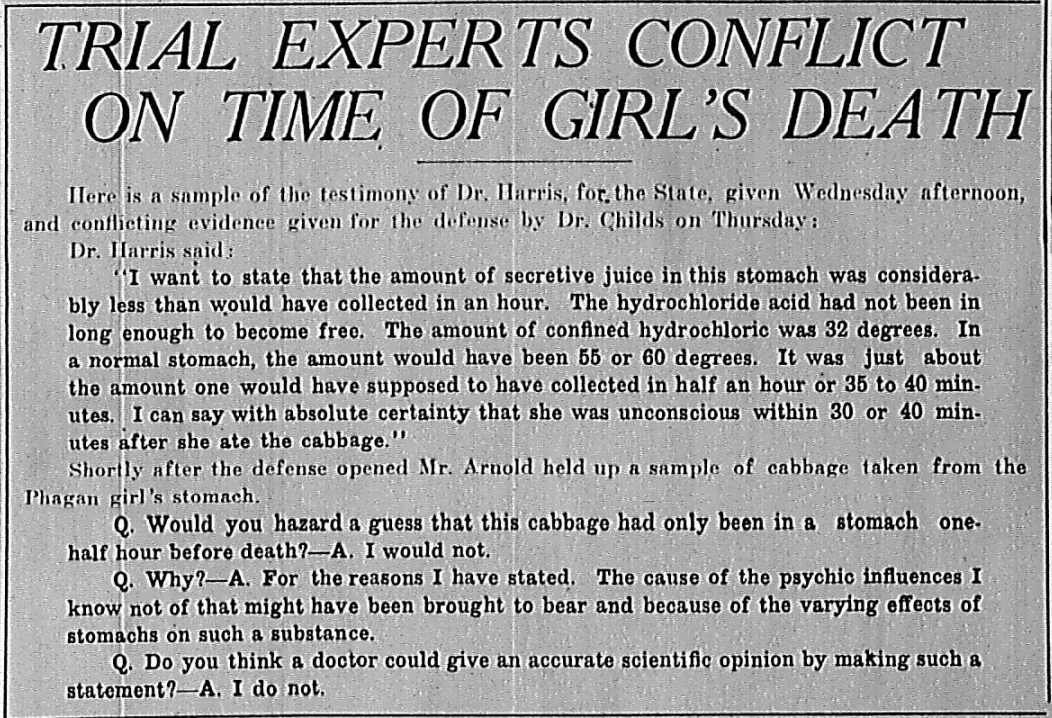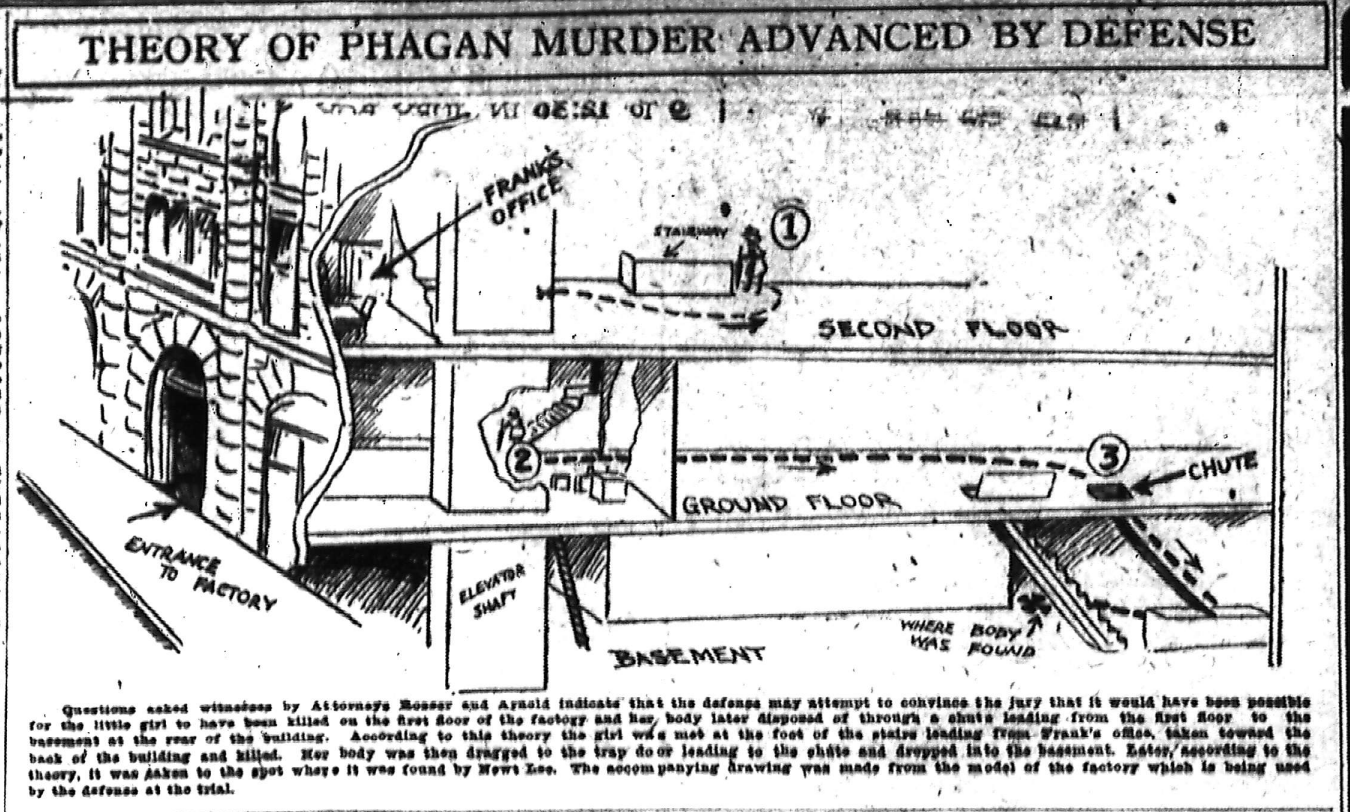
Another in our series of new transcriptions of contemporary articles on the Leo Frank case.
Atlanta Journal
August 10th, 1913
After Two Weeks of Testimony Only Evidence Directly Linking Frank With the Crime is the Sensational Statement Made on the Stand by Negro Sweeper-Summary of Developments in Trial to Date
STATE HAS INTRODUCED 34 WITNESSES, DEFENSE 10
A Synopsis of the Evidence Presented by Both Sides Shows Just What the State Has Sought to Prove and How the Defense Has Begun to Fight to Convince Jury of Frank’s Innocence
For two long and tedious weeks Leo M. Frank, indicted for the murder of Mary Phagan, has been on trial for his life. During those two weeks forty-eight witnesses have testified, innumerable exhibits, documents, books, diagrams, photographs and illustrative contrivances have been displayed to the jury.
Only the remarkable story of James Conley, the negro sweeper, directly connects the defendant with the crime, and even in this ingenious narrative the negro did not say that he actually saw Frank do the deed.
Time and again while under the merciless gruelling of Attorneys Rosser and Arnold, Conley frankly and complacently confessed that he had lied and lied frequently in his many statements and affidavits to the detectives. However, he clung fast to his story as related upon the witness stand Monday, Tuesday and part of Wednesday. He had every circumstance and feature of this story clear in his mind and not once during the sixteen and a half hours that he was in the witness chair did he admit that any portion of it was false — notwithstanding the terrific bombardment of questions hurled at him on cross-examination by Attorney Rosser.
Continue Reading →
